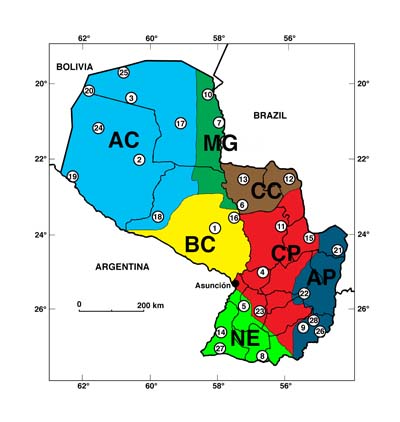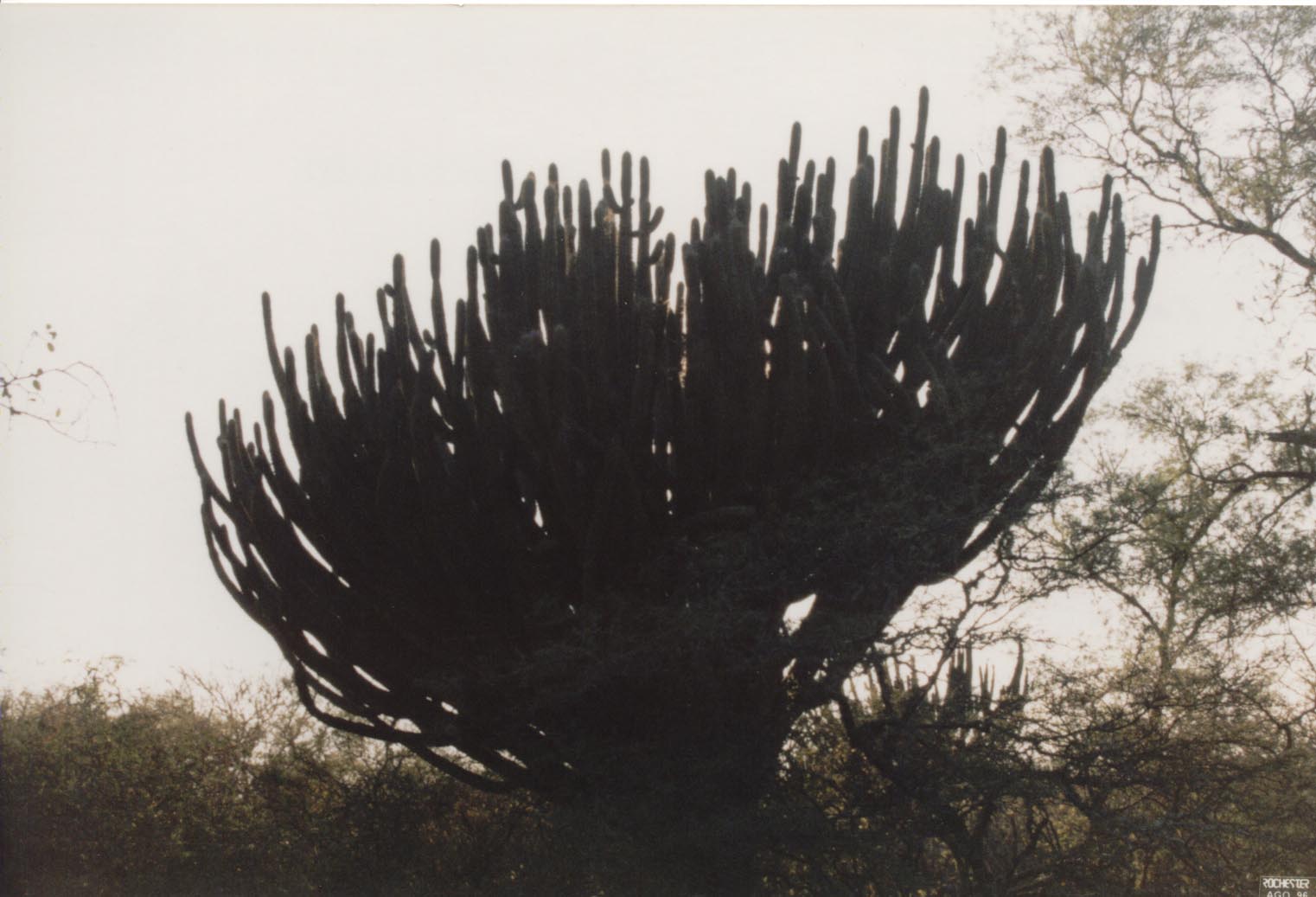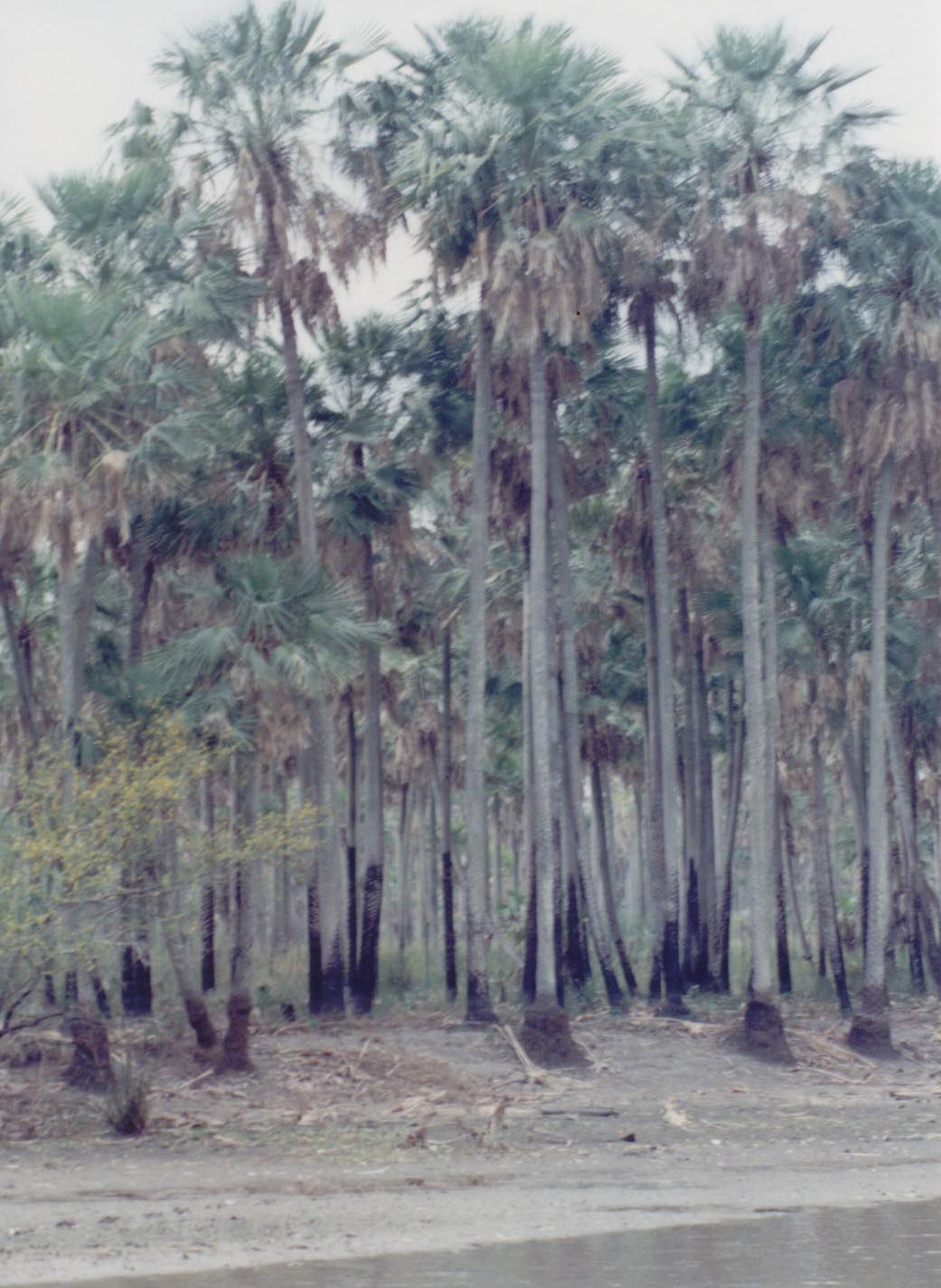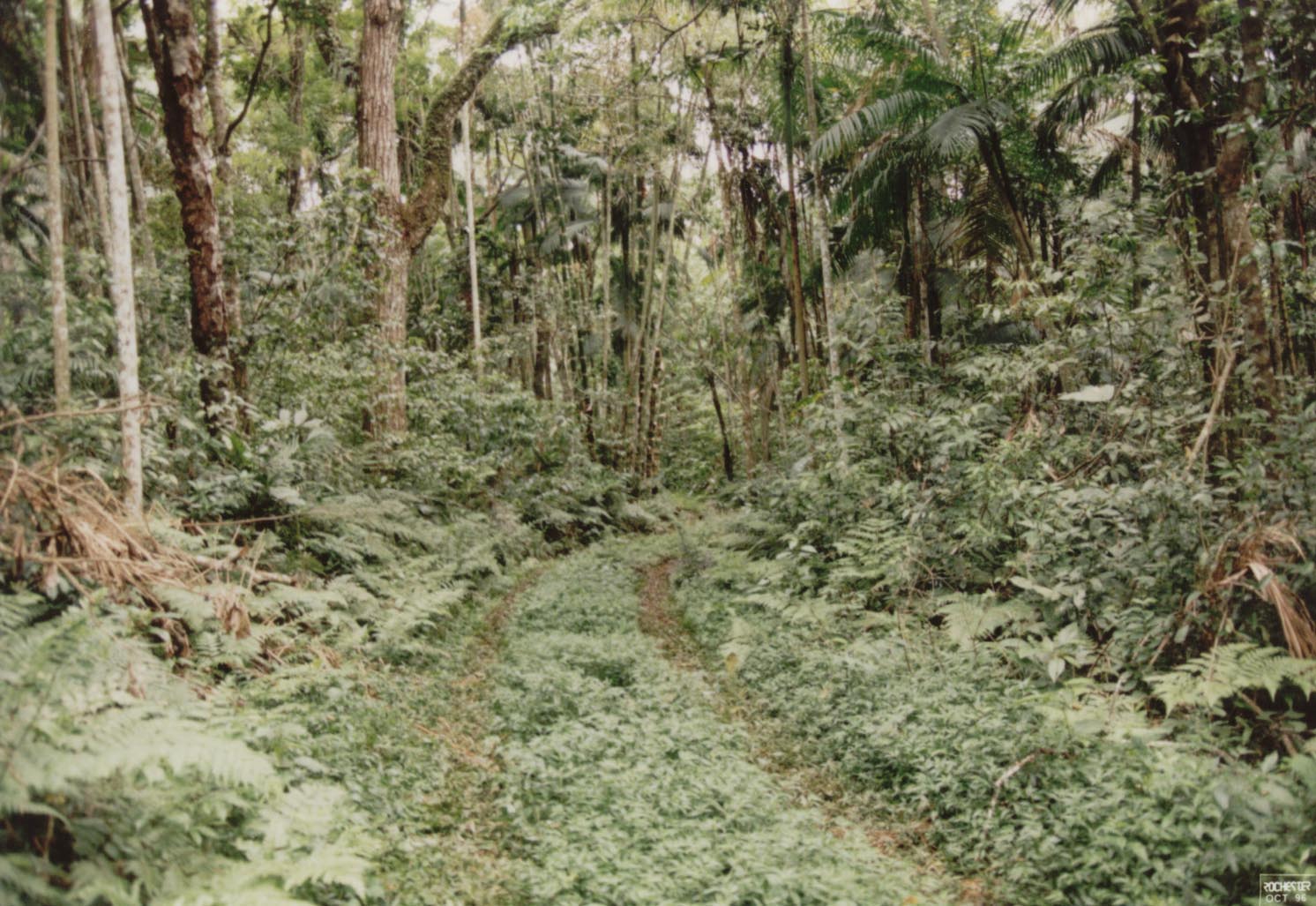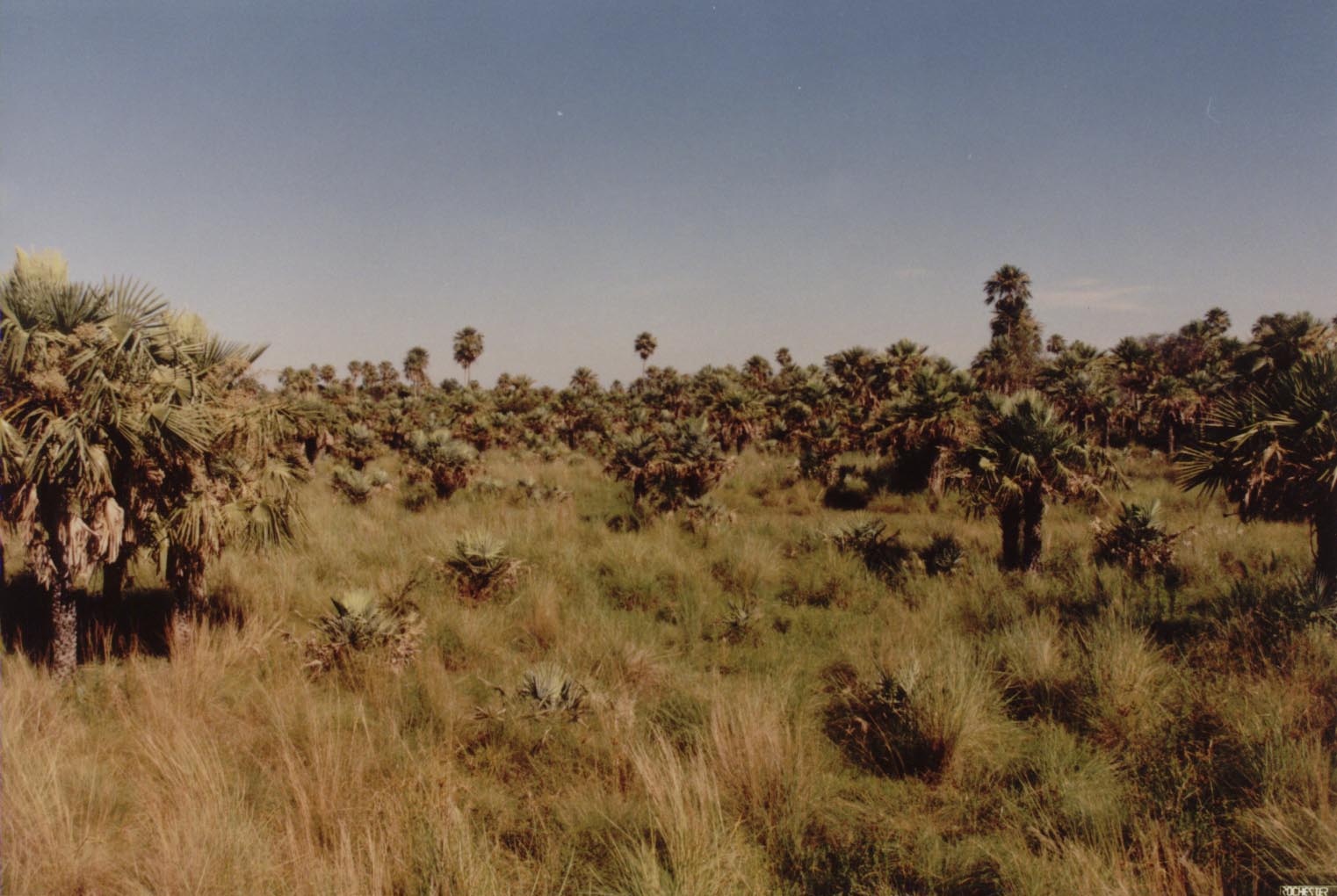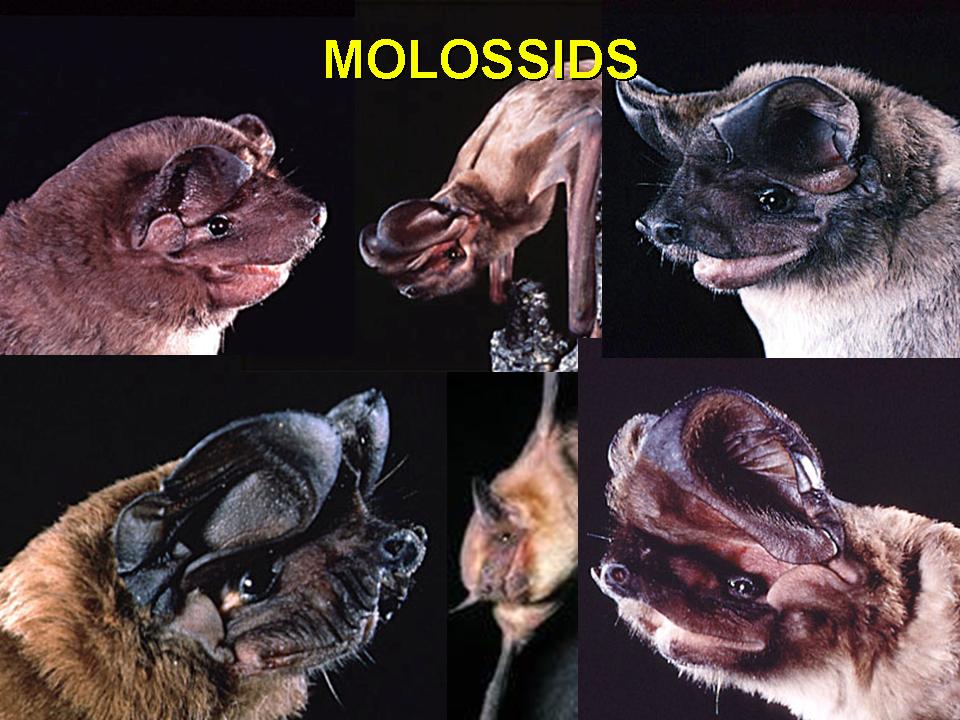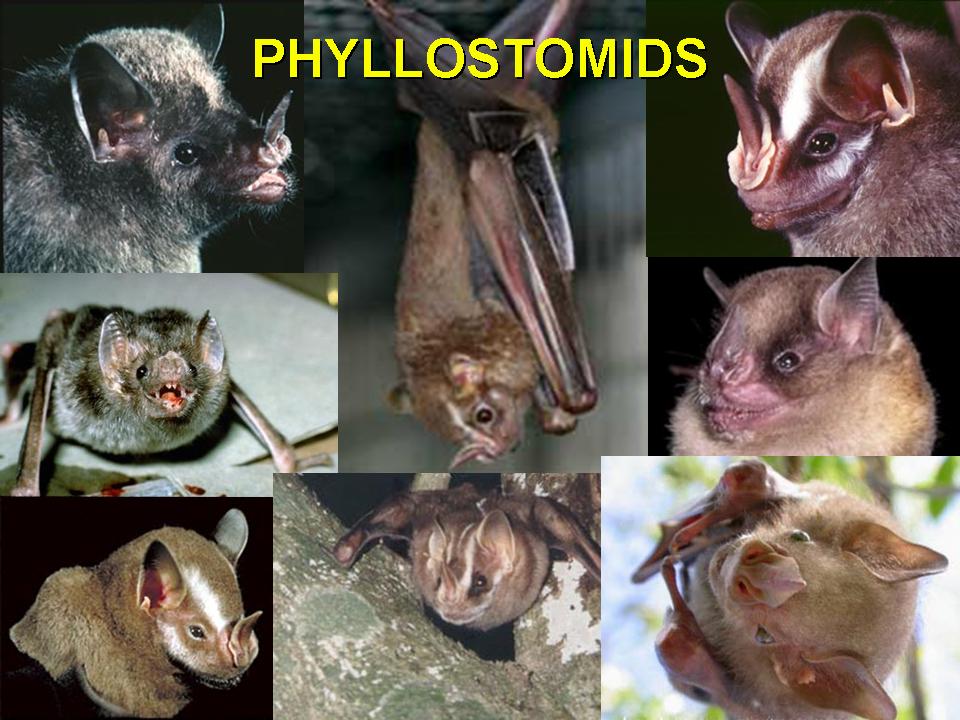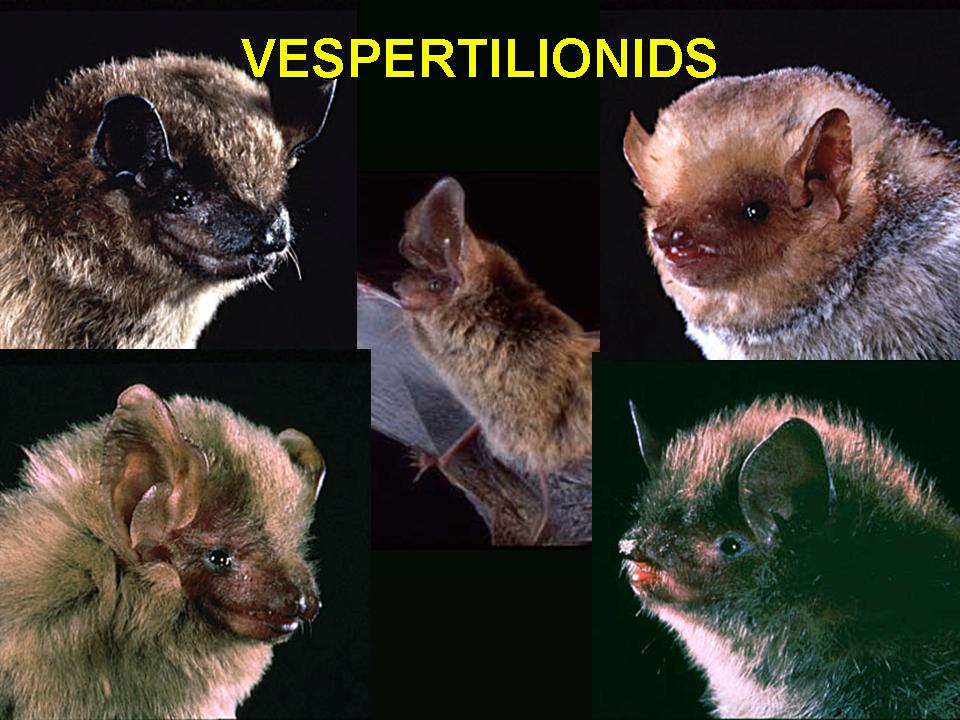|
||||||||||||
The Project
|
||||||||||||
The Country
|
||||||||||||
The BatsFifty-four species of bat are known from Paraguay (López-González 1998, 2005, Willig et al. 2000) representing six families, including Emballonuridae (1 species), Molossidae (17 species), Natalidae (1 species), Noctilionidae (2 species), Phyllostomidae (20 species), and Vespertilionidae (13 species). Moreover, these bats represent a diverse suite of feeding guilds, including 9 frugivores, 15 aerial insectivores, 17 high-flying insectivores, 8 gleaning animalivores, 2 nectarivores, one piscivore, and 2 sanguinivores. Our faunal surveys recorded 5 species of bat (Chiroderma doriae, Tonatia brasiliense, Molossus bondae, Histiotus macrotus, and Natalus stramineus) previously not known from Paraguay ( López-González et al. 1998, Willig et al. 2000). We also captured 38 of 49 species of bats previously known from the country. Many of the species previously recorded from the country that we did not capture (e.g., Peropteryx macrotis, Anoura caudifer, Macrophyllum macrophyllum, Phyllostomus discolor, P. hastatus, Tonatia sylvicola, Vampyressa pusilla, Myotis ruber, Histiotus velatus, Nyctinomops macrotis, and Tadarida brasiliensis) are at the edge of their geographic range in the country and likely occur at low densities or may have been locally extirpated as a result of recent habitat loss and fragmentation.
|
||||||||||||
The ResearchThe project in Paraguay has produced a wide variety of research on a diverse group of taxa and this research continues today with publication of new manuscripts on Paraguayan mammals or their ectoparasites, in addition to new veins of research associated with infectious diseases. Data collected by the original project was the basis of or contributed significantly to the dissertations of 4 doctoral students (Celia López-González, Richard D. Stevens, Steven J. Presley, Carl Dick) and 1 masters students (P. Marcos Gorresen). A large part of the dissertation of Celia López-González has since been published as a book in Spanish on the bats of Paraguay (López-González 2005). The thesis of Marcos Gorresen evaluated the effects of landscape characteristics on populations of bats. The dissertation of Richard Stevens used 2 Paraguayan bat communities as part of a larger data set to evaluate latitudinal patterns of morphological, taxonomic, and functional diversity in New World bats. The dissertation of Steven Presley evaluated effects of bat host characteristics on abundance and richness of their ectoparasite assemblages. The dissertation of Carl Dick detailed the autecology of streblid bat flies and their patterns of host specificity. The project documented several species previously not recorded from the country (López-González et al. 1998) and was the basis for a systematic review of Paraguayan Myotis (López-González et al. 2001) and the taxonomic status of Molossus bondae (López-González and Presley 2001). Subsequently, a series of papers have explored the composition of bat assemblages in Paraguay (Willig et al. 2000, Stevens et al. 2004), conservation strategies in South America (Owen 2000, Andelman and Willig 2002), biogeography of Paraguayan bats (López-González et al. 2004), landscape-level responses of bats to habitat loss and fragmentation (Gorresen and Willig 2004, Gorresen et al. 2005), and the structure of the Paraguayan bat metacommunity (Stevens et al. 2007, Presley et al. 2009). Considerable work has focused on the ectoparasites of Paraguayan bats. New species of ectoparasite have been described from the collections (Graciolli and Dick 2004), complete faunal surveys of bat flies have been published (Dick and Gettinger 2005, Graciolli et al. 2006), and host specificity have been studied (Dick 2007). In addition, the role of host characteristics in determining the abundance of parasite species (Presley and Willig 2008) and on the structure of ectoparasite assemblages have been studied (Presley 2007). |
||||||||||||
Collaborator on Paraguayan Bat Research
|
||||||||||||
Dissertations and Theses López-González, C. 1998. Systematics and zoogeography of the bats of Paraguay. Unpubl. Ph.D. diss., Texas Tech University, Lubbock. Gorresen, P.M. 2000. Responses of phyllostomid bats to the spatial complexity of Atlantic Forest habitat fragments at multiple landscape levels. Unpubl. M.S. thesis, Texas Tech University, Lubbock. Stevens, R.D. 2002. A Comprehensive Assessment of Gradients of Biodiversity: Morphological, Functional, and Taxonomic Perspectives. Unpubl. Ph.D. diss., Texas Tech University, Lubbock. Presley, S. J. 2004. Ectoparasitic assemblages of Paraguayan bats: ecological and evolutionary perspectives. Unpubl. Ph.D. diss., Texas Tech University, Lubbock. PDF Dick, C. W. 2005. Ecology and host specificity of Neotropical bat flies (Diptera: Streblidae) and their chiropteran hosts. Unpubl. Ph.D. diss., Texas Tech University, Lubbock. Related Manuscripts López-González, C., S. J. Presley, R. D. Owen, M. R. Willig, and Isabel Gamarra de Fox. 1998. Noteworthy records of bats (Chiroptera) from Paraguay. Mastozoología Neotropical 5:41-45. Gettinger, D., and R. D. Owen. 2000. Androlaelaps rotundus Fonseca (Acari: Laelapidae) associated with akodontine rodents in Paraguay: a morphometric examination of a pleioxenous ectoparasite. Revista Brasileira de Biología 20:425-434. Willig, M. R., S. J. Presley, R. D. Owen, and C. López-González. 2000. Composition and structure of bat assemblages in Paraguay: a subtropical – temperate interface. Journal of Mammalogy 81:386-401. Owen, R. D. 2000. La importancia de los inventarios cuantitativos en la conservación de la fauna silvestre. Pp. 15-28, in Manejo de Fauna Silvestre en Amazonia y Latinoamerica (E. Cabrera, C. Mercolli, and R. Resquín, eds.). Fundación Moises Bertoni, Asunción, Paraguay. López-González, C., S. J. Presley, R. D. Owen, and M. R. Willig. 2001. The taxonomic status of Myotis (Chiroptera: Vespertilionidae) in Paraguay. Journal of Mammalogy 82:138-160. López-González, C., and S. J. Presley. 2001. Taxonomic status of Molossus bondae J. A. Allen (Chiroptera: Molossidae), 1904, with new records for Argentina, Brazil, and Paraguay and description of a new subspecies. Journal of Mammalogy 82:760-774. Andelman, S. A., and M. R. Willig. 2002. Alternative conservation reserve configurations for Paraguayan bats: considerations of spatial scale. Conservation Biology 16:1352-1363. Chu, Y-K., R. D. Owen, L. González, and C. B. Jonsson. 2003. The complex ecology of hantavirus in Paraguay. American Journal of Tropical Medicine and Hygiene 69:263-268. López-González, C. 2004. Ecological zoogeography of the bats of Paraguay. Journal of Biogeography 31:33-45. Gorresen, P. M., and M. R. Willig. 2004. Landscape responses of bats to habitat fragmentation in Atlantic Forest of Paraguay. Journal of Mammalogy 85:688-97. Stevens, R. D., M. R. Willig, and I. Gamarra de Fox. 2004. Comparative community ecology of bats in eastern Paraguay: taxonomic, ecological, and biogeographic perspectives. Journal of Mammalogy 85:698-707. Graciolli, G. and C. W. Dick. 2004. A new species of Metelasmus (Diptera: Streblidae: Streblinae) from southern South America. Zootaxa 509:1-8. Dick, C. W. and D. Gettinger. 2005. A faunal survey of streblid bat flies (Diptera: Streblidae) associated with bats in Paraguay. Journal of Parasitology 91:1015-1024. Gorresen, P. M., M. R. Willig, and R. E. Strauss. 2005. Multivariate analysis of scale-dependent associations between bats and landscape structure. Ecological Applications 15:2126-2136. López-González, C. 2005. Murciélagos del Paraguay. Publicaciones del Comité Español del Programa Hombre y Biosfera—Red IberMaB, UNESCO no. 9. Presley, S. J. 2005. Ectoparasitic assemblages of Paraguayan bats: ecological and evolutionary perspectives. Mastozoología Neotropical 12:103-105. Goodin, D.G., D. Koch, R. D. Owen, Y-K. Chu, J. M. S. Hutchinson, and C. B. Jonsson. 2006. Land cover associated with hantavirus presence in Paraguay. Global Ecology and Biogeography 15:519-527. Chu, Y-K., B. Milligan, R. D. Owen, D. Goodin, and C. B. Jonsson. 2006. Phylogenetic and geographical relationships of hantavirus strains in eastern and western Paraguay. American Journal of Tropical Medicine and Hygiene 75:1127-1134. Graciolli, G., C. W. Dick, and D. Gettinger. 2006. A faunal survey of nycteribiid flies (Diptera: Nycteribiidae) associated with bats in Paraguay. Zootaxa 1220:35-46. Presley, S. J. 2007. Streblid bat-fly assemblage structure on Noctilio leporinus (Chiroptera: Noctilionidae): nestedness and species co-occurrence. Journal of Tropical Ecology 23:409-417. Dick, C. W. 2007. High host specificity of obligate ectoparasites. Ecological Entomology 32:446-450. Stevens, R. D., C. López-González, and S. J. Presley. 2007. Geographical ecology of Paraguayan bats: spatial integration and metacommunity structure of interacting assemblages. Journal of Animal Ecology 76:1086-1093. De la Sancha, N., S. Solari, and R. D. Owen. 2007. First records of Monodelphis kunsi Pine (Didelphimorphia, Didelphidae) from Paraguay, with an evaluation of its distribution. Mastozoología Neotropical 14:241-247. Presley, S. J., and M. R. Willig. 2008. Intraspecific patterns of ectoparasite abundances on Paraguayan bats: effects of host sex and body size. Journal of Tropical Ecology 24:75-83. D’Elía, G., I. Mora, P. Myers, and R.D. Owen. 2008. New and noteworthy records of Rodentia (Erethizontidae, Sciuridae, and Cricetidae) from Paraguay. Zootaxa 1784:39-57. Presley, S. J., C. L. Higgins, C. López-González, and R. D. Stevens. 2009. Elements of metacommunity structure of Paraguayan bats: multiple gradients require analysis of multiple axes of variation. Oecologia 160:781-793. Presley, S.J. 2011. Interspecific aggregation of ectoparasites on bats: importance of hosts as habitats supersedes interspecific interactions. Oikos 120: 832-841. Presley, S.J. 2012. Sex-based population structure of ectoparasites from Neotropical bats. Biological Journal of the Linnean Society 107:56-66. de la Sancha, N., C.L. Higgins, S.J. Presley, and R.E. Strauss. 2014. Metacommunity structure in a highly fragmented forest: has deforestation in the Atlantic Forest altered historic biogeographic patterns? Diversity and Distributions 20: 1058-1070. Presley, S.J., T. Dallas, B.T. Klingbeil, and M.R. Willig. Phylogenetic signals in host-parasite associations for Neotropical bats and Nearctic desert rodents. Journal of Animal Ecology (Submitted). |
||||||||||||
Please contact steven.presley@uconn.edu or michael.willig@uconn.edu if you have questions, comments, or corrections. Unless otherwise indicated, figures, tables, and images that appear on this page may not be used, reproduced, copied, or posted elsewhere, for any reasons, without permission. |

